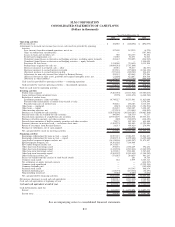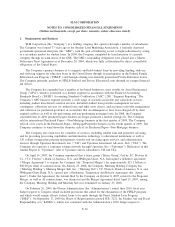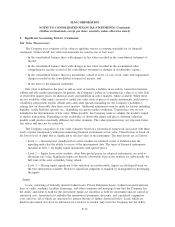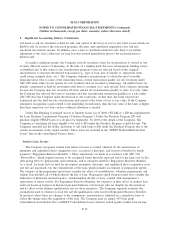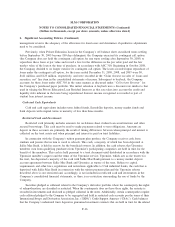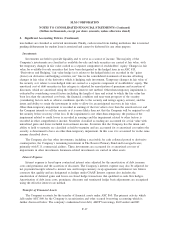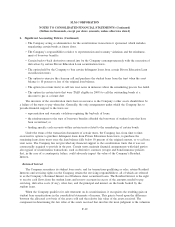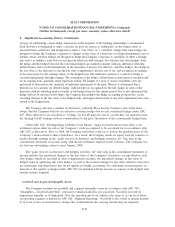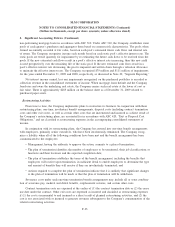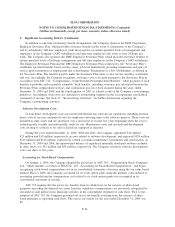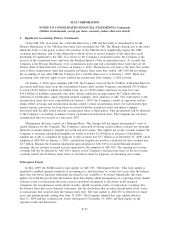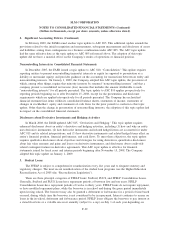Sallie Mae 2009 Annual Report Download - page 146
Download and view the complete annual report
Please find page 146 of the 2009 Sallie Mae annual report below. You can navigate through the pages in the report by either clicking on the pages listed below, or by using the keyword search tool below to find specific information within the annual report.2. Significant Accounting Policies (Continued)
• The Company acting as administrator for the securitization transactions it sponsored, which includes
remarketing certain bonds at future dates.
• The Company’s responsibilities relative to representation and warranty violations and the reimburse-
ment of borrower benefits.
• Certain back-to-back derivatives entered into by the Company contemporaneously with the execution of
derivatives by certain Private Education Loan securitization trusts.
• The option held by the Company to buy certain delinquent loans from certain Private Education Loan
securitization trusts.
• The option to exercise the clean-up call and purchase the student loans from the trust when the asset
balance is 10 percent or less of the original loan balance.
• The option (in certain trusts) to call rate reset notes in instances where the remarketing process has failed.
• The option (in certain trusts that were TALF eligible in 2009) to call the outstanding bonds at a
discount to par at a future date
The investors of the securitization trusts have no recourse to the Company’s other assets should there be
a failure of the trusts to pay when due. Generally, the only arrangements under which the Company has to
provide financial support to the trusts are:
• representation and warranty violations requiring the buyback of loans;
• the reimbursement to the trust of borrower benefits afforded the borrowers of student loans that have
been securitized; or
• funding specific cash accounts within certain trusts related to the remarketing of certain bonds.
Under the terms of the transaction documents of certain trusts, the Company has, from time to time,
exercised its options to purchase delinquent loans from Private Education Loan trusts, to purchase the
remaining loans from trusts once the loan balance falls below 10 percent of the original amount, or to call rate
reset notes. The Company has not provided any financial support to the securitization trusts that it was not
contractually required to provide in the past. Certain trusts maintain financial arrangements with third parties
also typical of securitization transactions, such as derivative contracts (swaps) and bond insurance policies
that, in the case of a counterparty failure, could adversely impact the value of the Company’s Residual
Interest.
Retained Interest
The Company securitizes its student loan assets, and for transactions qualifying as sales, retains Residual
Interests and servicing rights (as the Company retains the servicing responsibilities), all of which are referred
to as the Company’s Retained Interest in off-balance sheet securitized loans. The Residual Interest is the right
to receive cash flows from the student loans and reserve accounts in excess of the amounts needed to pay
servicing, derivative costs (if any), other fees, and the principal and interest on the bonds backed by the
student loans.
When the Company qualifies for sale treatment on its securitizations, it recognizes the resulting gain on
student loan securitizations in the consolidated statements of income. This gain is based upon the difference
between the allocated cost basis of the assets sold and the relative fair value of the assets received. The
component in determining the fair value of the assets received that involves the most judgment is the valuation
F-19
SLM CORPORATION
NOTES TO CONSOLIDATED FINANCIAL STATEMENTS (Continued)
(Dollars in thousands, except per share amounts, unless otherwise stated)


